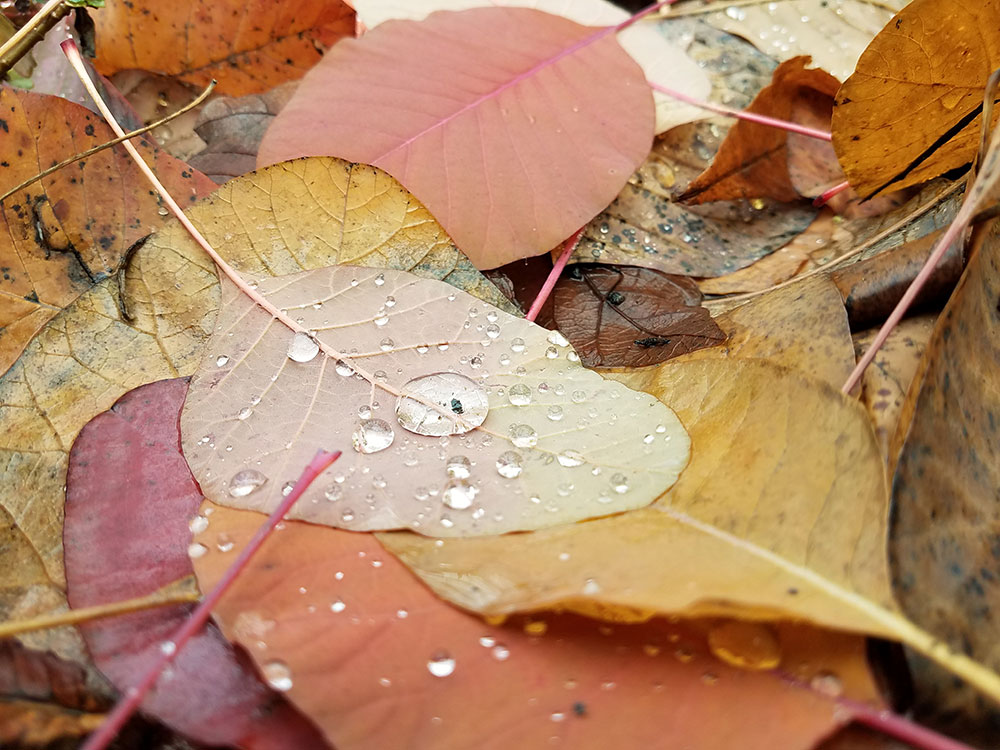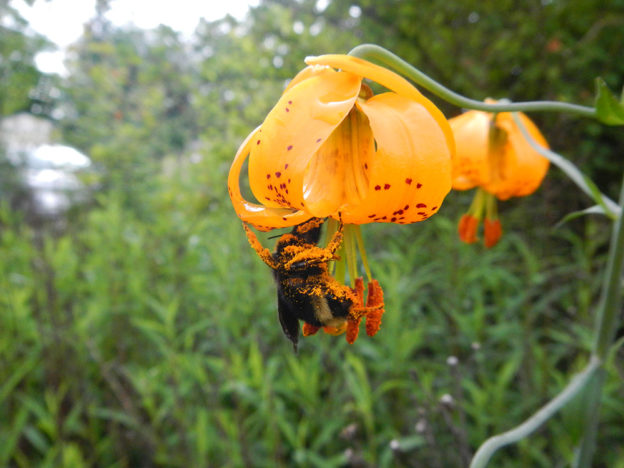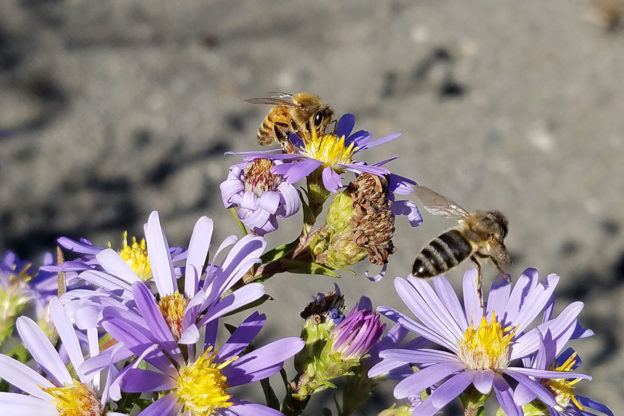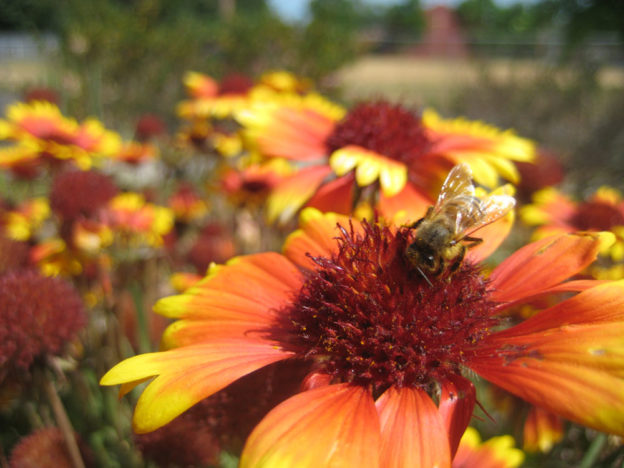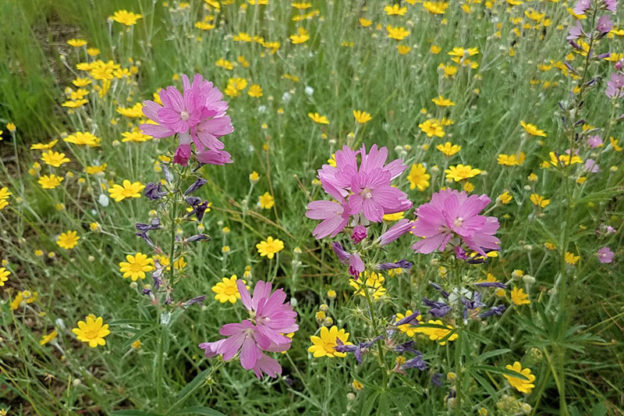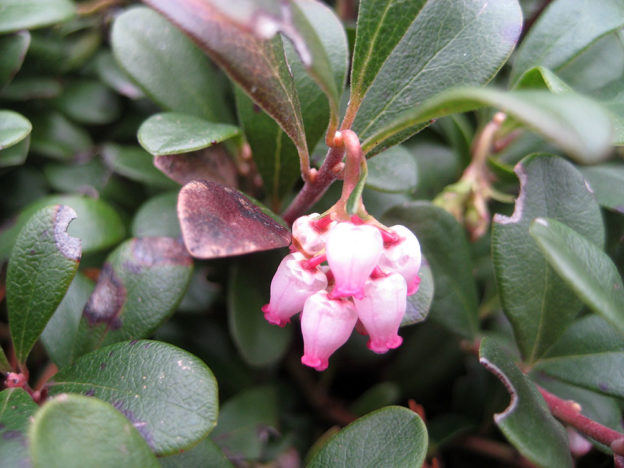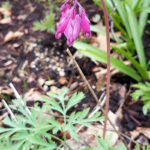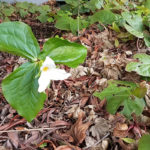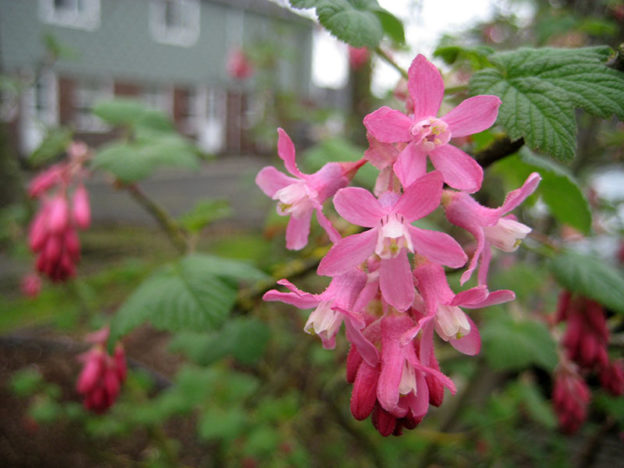Learn all about our EMSWCD Grounds “Conservation Corner” here! In this section we’ll share small moments and interesting observations from our property, as well as related natural history tidbits, on a weekly to monthly basis.
Nature Notes 10: Leave the leaves
2019-12-02 12:00:47Welcome to EMSWCD’s Nature Notes series! Nature Notes shares small moments and interesting observations from our property, as well as related natural history tidbits, on a weekly to monthly basis.
December 2ndth, 2019
Leave the leaves!
As 2019 draws to a close, you can help birds and pollinators (and save yourself some yardwork!) with some simple actions.
- Leaf cover provides valuable cover for beneficial insects and is also healthy for the soil
In your yard:
Leave the leaves — and everything else! Beneficial insects (those that eat garden pests, pollinate flowers and vegetables, and feed birds) need shelter through the winter just like people do. They hide in the soil under leaf litter, between layers of bark and wood, in rock piles. Many pollinators also spend the winter in hollow standing stalks of woody shrubs. Birds depend on these insects for food through the winter and into the spring. Help them survive by leaving your garden natural this winter!- A variety of mason bee shelters
On your balcony, porch, or window:
Many people help winter birds with feeders, but did you know you can also ensure a good crop of wild fruit and seeds next season by raising mason bees? These efficient early spring pollinators are safe and easy to raise, and their shelters take up no more space than a bird house. This is the time of year to start — call your local nurseries and farm supply stores to see if they have mason bee cocoons and nest supplies in stock.
Nature Notes 9: Helping protect the environment one choice at a time
2019-07-01 11:48:34July 1stth, 2019
Helping protect the environment one choice at a timeSummer and vacation season are in full swing! As we head to the beach though, we are also hearing story after story of an environment in trouble. The good news is that there is a lot we can do. From the plants in our yard to the type of sunscreen we wear, our daily choices really do matter.
Nature Notes 8: Plant Sales, Cultivars and Neonicotinoids, oh my!
2019-03-26 14:16:34March 26thth, 2019
Plant Sales, Cultivars and Neonicotinoids, oh my! Spring is here and it's time to get those native plants in the ground! Here are a few things to keep in mind as you search for that perfect addition to your native plant garden.Nature Notes 7 - Leaves and snow
2018-11-29 11:45:20November 30th, 2018
Natural Leaf and Snow Management Tempted to pull out that leaf-blower for one last fall clean-up? Please consider raking instead. Not only are leaf blowers noisy, they are also very bad for the environment and human health.Did you know…
- Two-stroke engines emit hundreds of times more air pollution than cars. This pollution contributes to global warming, smog and acid rain.
- Air pollution also raises risks of cancer, heart disease and asthma, especially in children.
- The forced hot air damages plants and soil organisms, and compacts soil which makes plants more vulnerable to summer drought.
- Electric leaf blowers create less air pollution and are somewhat quieter, but raking is still a better alternative.
 Leaf cover is beneficial for the soil and also provides habitat for many pollinators and beneficial insects - leave those leaves![/caption]
Leaf cover is beneficial for the soil and also provides habitat for many pollinators and beneficial insects - leave those leaves![/caption]Nature Notes 6 - Winter gardening for birds and pollinators
2018-10-15 14:36:22October 15th, 2018
Winter Gardening for Birds and Pollinators The goldenrod has gone to seed, and honeybees are scouring the last of the fall asters. Here at EMSWCD, we employ a few simple practices to reduce the fall garden work and help birds and pollinators survive the winter. Read on to learn what you can do!Did you know…
- Birds feed on seeds and insects through the winter. In the spring they will need lots of insects to feed their young. You can help birds by leaving lots of habitat for pollinators and other beneficial insects to shelter safely through the winter.
- Adult butterflies, ladybugs, and many other beneficial insects overwinter in rock crevices, under bark, and in leaf litter. They lay their eggs in stems, on twigs, and under leaves. Pollinators and their larvae shelter in hollow standing stalks, and beetles take refuge in clumping grasses.
- A natural winter garden is a healthy pollinator hotel!
Nature Notes 5: National Pollinator Week!
2018-06-18 16:19:46June 18th, 2018
June 18th-23rd is National Pollinator Week! This week, EMSWCD is celebrating all the things pollinators do for us, and all the things we can do for them.Did you know…
- One third to one quarter of our food - and nearly all our flowers - depend on pollinators! Do you want to live in a world without chocolate or coffee? Without roses or honeysuckle? Neither do we.
- Wild pollinators are more efficient than honeybees, so many crops produce higher yields when wild bees are present.
- Wild pollinators are generally less aggressive than honey bees, since most are solitary and don’t have a large hive or store of honey to defend.
Nature Notes 4: Native Plant Gallery
2018-05-23 17:52:51May 23rd, 2018
May is Native Plant Month!
This month in celebration of Native Plant Month, we’re highlighting a variety of native plants, all of which you can come see any time at our Conservation Corner! May is Native Plant Month in Portland for good reason — everything is blooming in all the colors of the rainbow. Check out these beauties in our gallery below, or come explore our grounds and see all these and more in person!Nature Notes 3: May is Native Plant Month!
2018-05-07 11:11:33May 7th, 2018
May is Native Plant Month!
This month in celebration of Native Plant Month, we’ll be highlighting a variety of native plants, all of which you can come see any time at our Conservation Corner! This week we’re seeing purple everywhere with common camas, Henderson’s shooting star, Menzie’s larkspur, and Oregon Iris in full bloom.Nature Notes - March 27th, 2018
2018-03-27 12:01:09Welcome to EMSWCD’s Nature Notes series! Nature Notes shares small moments and interesting observations from our property, as well as related natural history tidbits, on a weekly to monthly basis.
March 27th, 2018
Early spring bloomers!
Right now the non-native cherry trees, forsythia, and daffodils are dazzling us with their showy displays, but many other native species are blooming as well, such as kinnickinnick, trilliums, and bleeding heart.
- Bleeding heart (Dicentra formosa)
- White trillium (Trillium ovatum)
Kinnickinnick is an evergreen, drought-tolerant, low-growing native shrub that is an excellent groundcover for tough spots such as parking strips. Its small pink flowers are not showy, but are important sources of food in early spring for pollinators like bumblebees, syrphid flies, and mason bees. White trilliums are long-lived herbaceous perennials of the forest floor; many do not bloom until they are seven years old! They are mostly pollinated by moths, beetles, and bumblebees. Dicentra, or bleeding-heart, is another long-lived understory perennial. Its delicate pink flower is an important spring necter source for hummingbirds.
Flowers that bloom early in the spring and late in the fall are very important to wildlife, so the longer you have flowers blooming, the prettier your yard will be for wildlife as well as for humans!
Nature Notes - March 1st, 2018
2018-03-01 18:16:15When EMSWCD purchased this property for our office, the yard consisted of a weed-filled lawn with a few trees. Our staff kept the trees, removed all the grass, and began landscaping and installing hundreds of native plants. Every year since then we’ve continued to add plants and make adjustments as needed, and the landscape is now totally transformed!
In our new Nature Notes series, we’ll share small moments and interesting observations from our property, as well as related natural history tidbits, on a weekly to monthly basis. It’s important to us to be present on the landscape, to really see the world we move through every day—both its changes and its consistency. The more aware we become of the natural world around us, and of how plants and animals interact, the better we can help people care for land and water.
